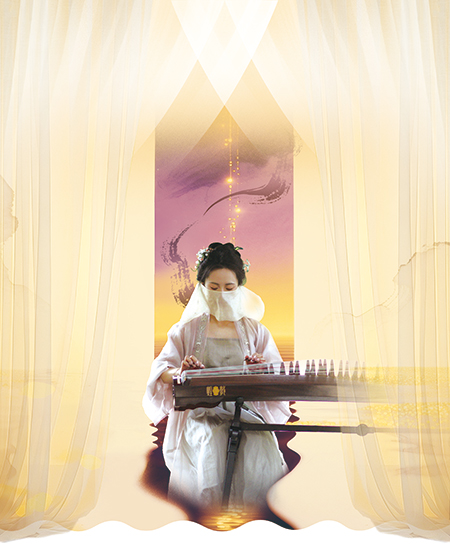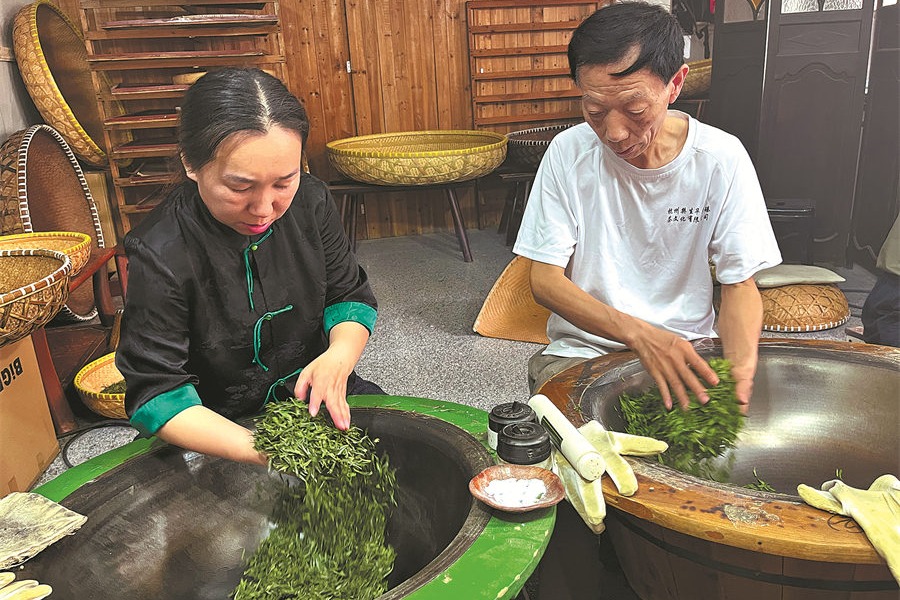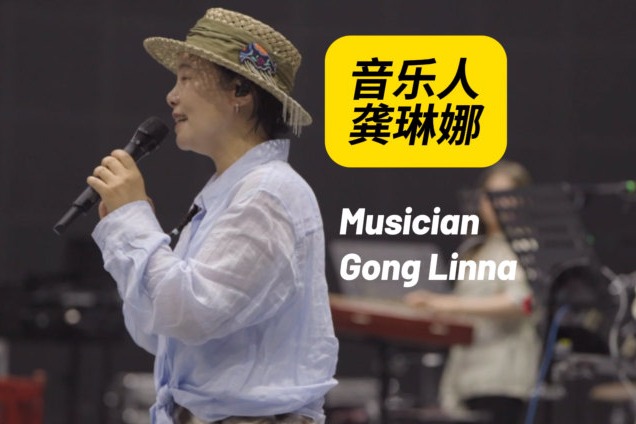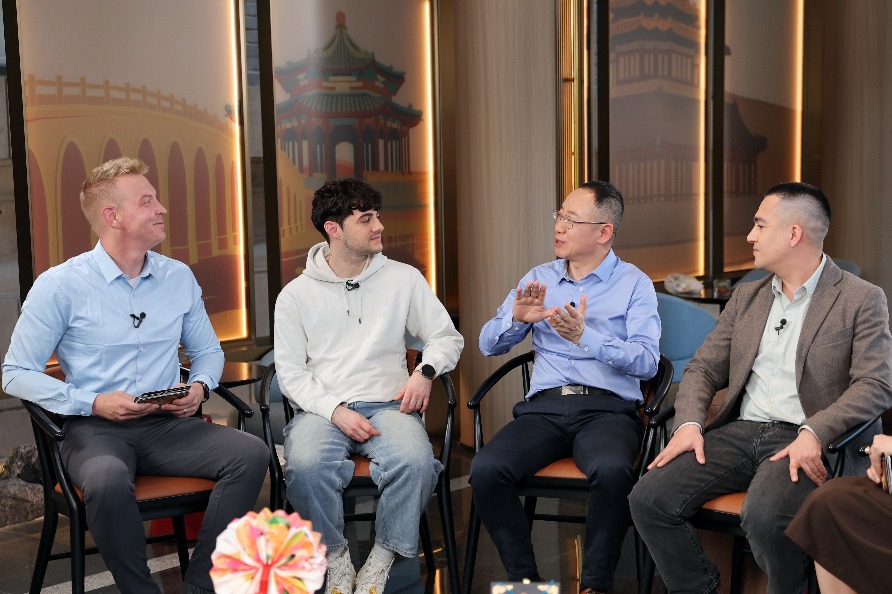Ancient instrument, modern beat
A music influencer fuses pop and tradition by covering global hits on the guzheng, bringing Chinese culture to new audiences.


"When choosing a career, I've always believed that young people should pursue what they genuinely love."
That's exactly the path Moyun (pseudonym) has taken. A music influencer with multiple viral hits worldwide, she has carved out a career for herself by covering both Chinese and Western pop songs on the guzheng, a traditional Chinese string instrument.
Since 2014, Moyun has been uploading her adaptations of pop music to Bilibili, a Chinese video-sharing platform. One of her early videos — a cover of the hit Japanese song Senbonzakura — quickly gained millions of views. The video became known as "Bilibili's Crown Jewel" and earned her the nickname "Guzheng Guru" in bullet comments from netizens.
Despite the rapid success, Moyun didn't let it disrupt her life. "I was still a student at the time, and during those years focused on studying, the video's sudden popularity didn't really change my daily routine," she recalled.
But the wave of positive feedback from the audience greatly inspired her to follow her passion for the guzheng.
"Even though I wasn't professionally trained, I've been playing the guzheng since childhood and have always loved it," she said. "So, compared to my original major — which is teaching Chinese as a second language — becoming a guzheng content creator after graduation felt like a clearer calling."
Fueled by that motivation, Moyun has built a loyal following by reinterpreting modern hits on the centuries-old instrument — including songs like Quan Yu Tian Xia (Sun Quan the Emperor) — and has gradually developed a unique style that blends tradition with pop culture.
In previous interviews, Moyun has shared some of the challenges in her creative process. "Traditional Chinese instruments aren't really suited for ensemble playing — each has a very strong personality," she said. "The guzheng is a bit like the bass — it's not easy to create a lot of variation with it."
To cover a song, Moyun starts by composing a rough score. As she practices, she gradually adapts it to the guzheng's scale and applies appropriate plucking techniques, all while sticking to the original chords.
"After that, I try to give the song an even stronger guzheng flavor," she added.
To help her focus more on stage, Moyun began wearing a veil while performing as a student — a choice that later became her signature style.
"As someone who didn't major in music, my stage presence and body language weren't as polished as those of professionals. Wearing a veil helped me concentrate," she explained.
According to Moyun, her inspiration comes from the music she loves and her daily life.
For example, as a native of Chengdu in Southwest China's Sichuan province, she feels a deep connection to Sanxingdui, an ancient archaeological site known for its mysterious and significant Bronze Age artifacts. This connection led her to collaborate with the Sanxingdui Museum on a musical piece that promotes Chengdu's culture in her own way.
Gaming is another big part of her life. "After Black Myth: Wukong was released, I rearranged some of its tracks for the guzheng, which really resonated with many game fans," Moyun said.
Going global
In recent years, Western instrumental repertoire has become a major source of inspiration for Moyun's adaptations.
For her, sharing traditional Chinese instruments across cultures and engaging in mutual learning is fascinating.
"That's why I also post my videos on international platforms like YouTube," she said.
Plucking the guzheng with impressive speed and precision while rhythmically tapping its wooden frame to create catchy, foot-stomping beats, Moyun has captivated international audiences with her technical mastery.
One standout example is her cover of the Eagles' Hotel California, which has garnered more than 20 million views on YouTube. She based her version on the band's 1994 reunion tour performance, even replicating the percussion using live looping techniques.
"The modes in the original song fit the guzheng beautifully," Moyun said. "After analyzing its structure, I noticed repeating harmonic patterns, which made looping a natural choice."
The video's appeal was enhanced by her costume, which evoked the Wei and Jin dynasties (220-420), featuring a wide-sleeved robe and a handwoven straw hat that partially concealed her face.
After watching her videos, many international viewers are amazed by her performances and often ask the same question: "What instrument is this? I've never seen it before."
To Moyun, it's unfortunate that the guzheng remains relatively unknown outside of China, and that some viewers even mistake it for the koto, a Japanese plucked string instrument. She also finds the common English translation, "Chinese zither", inaccurate.
"Chinese translators have historically used existing English words for Chinese concepts. Many still call the guzheng a 'zither', but the zither is a German or Austrian instrument," Moyun explained.
Still, she's hopeful that change is coming, especially as more young people in China seek to reconnect with their cultural roots.
"I believe that when we present the guzheng with cultural confidence on global stages — introducing it proudly by name — guzheng will become the accepted universal term," she said.
Moyun's efforts to promote the instrument globally have also been recognized. Last year, she was named one of the "Good Young Netizens" for sharing the beauty of Chinese instruments with the world, in a campaign organized by the Central Committee of the Communist Youth League of China and the Cyberspace Administration of China.
Next, Moyun plans to reinterpret modern songs from various genres using the guzheng, challenging stereotypes about traditional Chinese instruments.
With a focus on finger-style techniques and original compositions, she aims to expand the boundaries of what the guzheng can do. "Never confine yourself — explore broader horizons," she said.





































